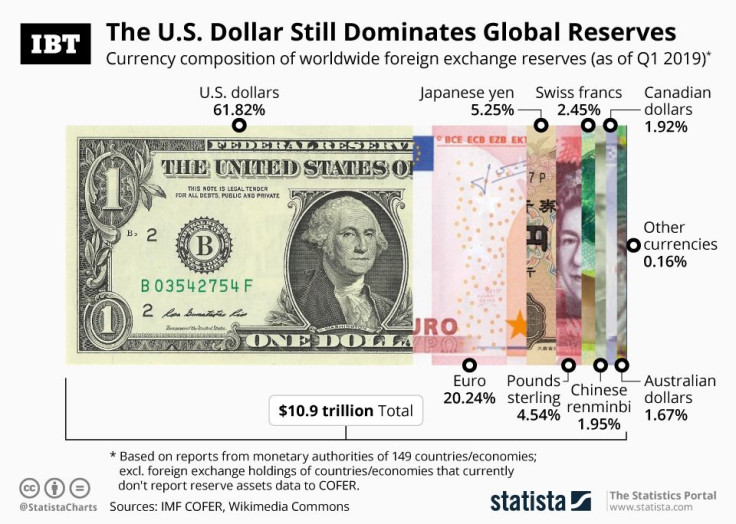Infographic: US Dollar Continues To Dominate Global Reserves

While there is officially no such thing as a world currency, the U.S. dollar still is the closest thing to being just that. It may no longer be as important as during the Bretton Woods system when most currencies were pegged against the dollar, but to this day the U.S. dollar remains the world’s de facto reserve currency.
According to COFER (Currency Composition of Official Foreign Exchange Reserves) data disclosed on a quarterly basis by the International Monetary Fund, the U.S. dollar accounted for 61.8 percent of the $10.9 trillion in allocated foreign exchange reserves (i.e. reported under COFER, 94 percent of total foreign exchange reserves) in the first quarter of 2019. While that’s down from around 70 percent at the turn of the century and more than 80 percent in the 1970s, it’s still way ahead of the second-placed euro, which accounted for 20.24 percent of allocated reserves in the first quarter of 2019.
To this day the U.S. dollar, backed by the largest economy in the world, is widely considered a safe haven, a reliable store of value, by people and governments in regions suffering from political or fiscal instability. According to estimates Federal Reserve Board economist Ruth Judson, nearly 60 percent of all U.S. dollar bills are held overseas, up from around 20 percent in 1990.



















